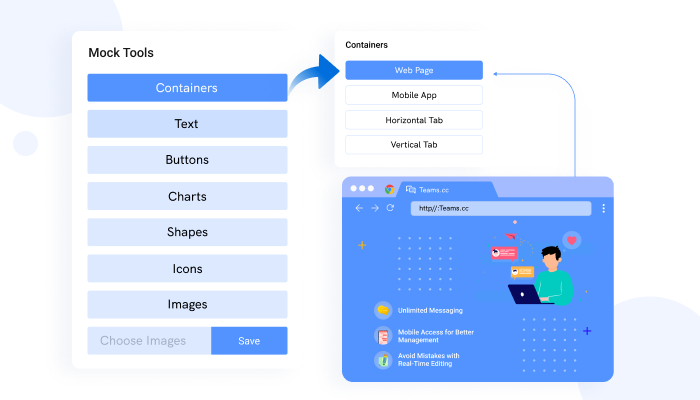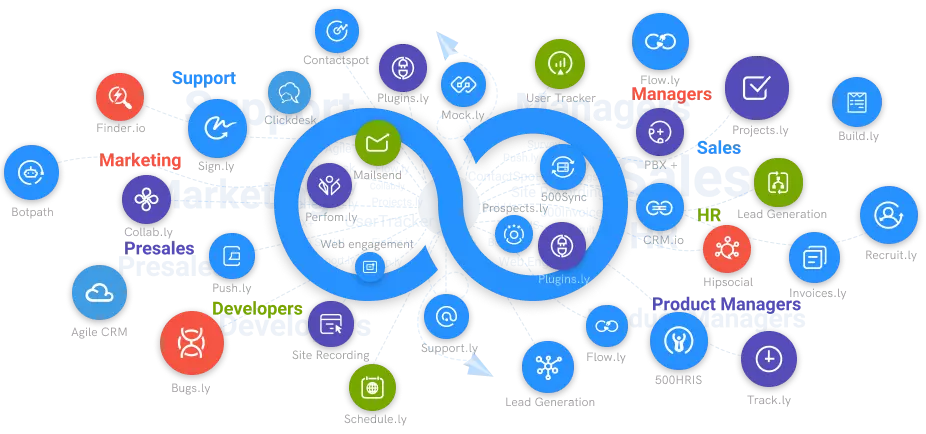What is Design Management?
A problem-solving approach or process is referred to as design management.
#1
Create unlimited mockups and prototypes for your projects
#2
Build mockups using drag-and-drop builder
#3
Choose from the wide range of pre-built templates
#4
Share mocks and collaborate across teams in real-time with notes and activity logs
#5
Design, run user tests and share mockups across teams
#6
Get a control over mock versions
#7
Share designs with your team through mock links
#8
Design mocks faster using components such as containers, charts, images and buttons
#9
Unbelievable pricing - the lowest you will ever find
#10
Everything your business needs - 50 apps, 24/5 support and 99.95% uptime
Design management refers to a problem-solving procedure or process. This process covers all business strategies, decisions, and ongoing processes that drive innovation and develop well-designed brands, environments, communications, services, and products that yield organizational success and improve quality of life.
Design management aims to guide project designers through every phase of the design process. It is also the process of managing a design. It is iterative. This means that you can backtrack and refine your previous steps during the process.
Design management strives to link customers, management, technology, innovation, and design to create a competitive edge across the three bottom lines: environmental, social/cultural, and economic factors. It is the science of using design to improve synergy and collaboration between business and design, to enhance design effectiveness.

The purview of design management is not limited to the strategic management and functions of design agencies and corporate designs alone; it includes processes, methods, staff, design operations, using design thinking and processes to fix general business issues and problems. Tactical advocacy for design management in an organization is a key differentiator. It also drives organizational success.
Some of the professionals practicing tactical design management include design researchers, design strategists, heads of design, design directors, creative directors, brand managers, UI/UX design managers, executives, and managers saddled with making decisions on how designs should be used in the organization.
The Evolution of Design Management
Design management was formalized as a discipline in the late 20th century. But, the idea of design management has been in place since companies started investing in designs.
- During the 1960s and 70s, design management was focused on systemizing the functions of designs. This is to make the output more reliable.
- The 1980s and 90s saw design managers become important contributors to the success of many organizations. The aim of design management became very strategic.
- The 2000s witnessed a change in the focus of design management. During the period, design took the form of a proactive wireframe tool. Now, management design is about your ability to lead the market and innovate.
Areas of Design Management
Design management is commonly associated with the following areas:
1. Product Mockup Design
A manager who deals in product design is expected to manage every function associated with product development. He needs to secure a connection with many other businesses to do this. The manager needs a user-centered approach or a UX-centered approach as the guiding principle for the work.
Ready to manage all your product wireframe designs at one place with MockFrame? Sign Up FREE for 10 users
2. Service Design
Service design is gradually becoming important due to the rise in product-service hybrid. It is the other side of product design. Service design features a customer-centered approach or (CV) customer experience approach.
3. Brand Design
During brand design, the manager’s responsibility is to produce trustworthy and reliable perspectives and create touchpoints and brand experiences that are easily and strongly recognizable to the clients.
4. Engineering Design
This design is focused more on technological outputs than all other areas of design, such as technological artifacts (like a system) or technical processes (like manufacturing).
5. Business Design
This is a new and emerging concept. It operates under the principle that you can design businesses from within for effective operation and higher levels of efficiency. A business design manager must be perfect in convincing people of their design’s utility.

The Benefits of Design Management
What are the benefits of design management? Why does it matter?
Design management is important because it provides a company with the only opportunity to innovate and stand out. In addition, it gives companies the ability to control and manage their design practice better.
Design Management also Enhances
- Finances: Design management is focused on increasing sales or reducing costs to measurable value or strategic value for your business.
- Customer and Brand Relationship: Brand design management ensures market differentiation and strategic positioning in the client’s eyes.
- Growth and Learning Curve: You can also apply design management to development and learning. This helps companies focus on the strategic integration of their available employees and quality.
- Internal Business Processes: Eliminating inefficiency and waste in the design process may be unclear to your company’s clients. However, it will surely be beneficial to your company regarding cost reduction.





